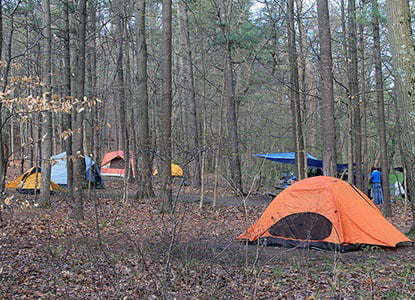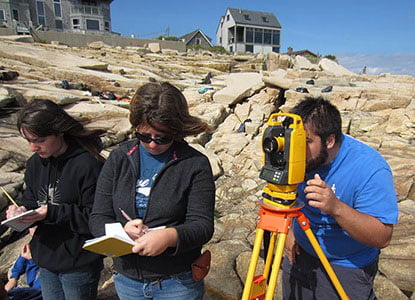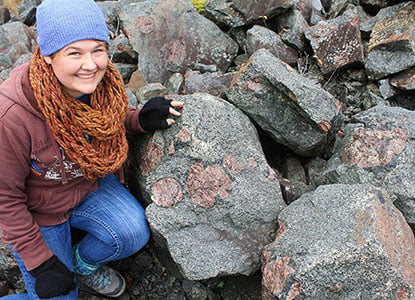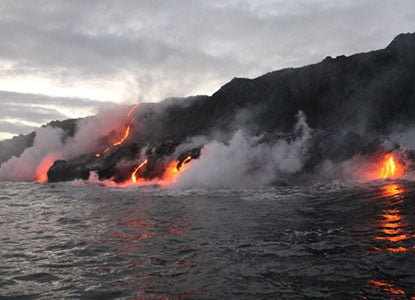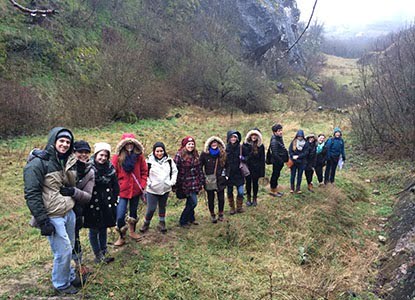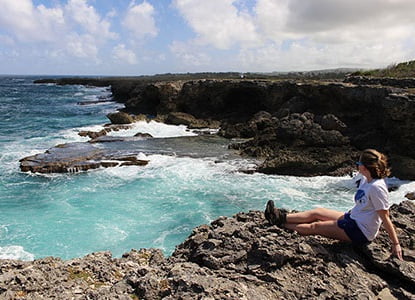Nicole Mehr ’17 and Dr. Zsuzsanna Balogh-Brunstad co-presented a paper also co-authored with Joseph Balnis ’15 and Brian Redder ’14 entitled “The biogeochemical effects of the hemlock woolly adelgid on soil water chemistry” at the Geological Society of America Northeastern Section Meeting, in Albany, New York, March 21-23, 2016.
Kyle Smart ’17 and Dr. Zsuzsanna Balogh-Brunstad co-presented a paper entitled “Fungi and biotite interactions in the rhizosphere of Norway Spruce” at the Geological Society of America Northeastern Section Meeting, in Albany, New York, March 21-23, 2016.
Nicole Mehr ’17 and Dr. Zsuzsanna Balogh-Brunstad co-presented a paper also co-authored with Joseph Balnis ’15 and Brian Redder ’14 entitled “The effects of the hemlock woolly adelgid on soil water chemistry” at the Geological Society of America Annual Meeting, in Baltimore, Maryland, November 1-4, 2015.
Kyle Smart ’17 and Dr. Zsuzsanna Balogh-Brunstad co-presented a paper also co-authored with Mark M. Smits, Håkan Wallander, Pavel Krám, and Jan Curik entitled “Silicate mineral alteration in the rhizosphere of Norway spruce in three catchments of the Slavkov Forest, Czech Republic” at the Geological Society of America Annual Meeting, in Baltimore, Maryland, November 1-4, 2015.
Katherine Popyack ’16 and Dr. David Griffing co-presented a paper also co-authored by Kaitlyn Morvan ’13 and Jason Stouffer ’05, on a paper entitled “Finding the elusive Catskill Delta: Three undergraduate research projects identify Devonian marginal-marine strata on Oyaron Hill, east-central New York” at the Geological Society of America Annual Meeting, in Baltimore, Maryland, November 1-4, 2015.
Jessica Domino ’15 and Dr. Eric Johnson co-presented a paper entitled “Formation of hybrid melts via magma mixing in the Cape Ann Plutonic Complex, Massachusetts USA” at the Geological Society of America Annual Meeting, in Baltimore, Maryland, November 1-4, 2015.
Sean Coppola ’15 and Dr. Eric Johnson co-presented a paper entitled “Soil creep rates under portions of the Hartwick College campus: Oneonta, New York” at the Geological Society of America Annual Meeting, in Baltimore, Maryland, November 1-4, 2015.
Kyle Smart ’17 and Dr. Zsuzsanna Balogh-Brunstad co-presented a paper also co-authored with Håkan Wallander and S. Stipp entitled “Mineral surface alterations in the rhizosphere of conifers” at the Goldschmidt Conference, Prague, Czech Republic, August 16-21, 2015.
Keith O’Connor ’15 and Dr. Zsuzsanna Balogh-Brunstad co-presented a paper entitled “Sediment and water analysis of a glacially formed lake” at the 249th ACS National Meeting and Exposition, Denver, Colorado, March 22-26, 2015.
Brian Redder ’14 and and Dr. Zsuzsanna Balogh-Brunstad co-presented a paper also co-authored with Joe Balnis ’14 entitled “Effects of woolly adelgid induced hemlock productivity decline on soil nutrient content” at the 249th ACS National Meeting and Exposition, Denver, Colorado, March 22-26, 2015.
Keith O’Connor ’15 and Dr. Zsuzsanna Balogh-Brunstad co-presented a paper entitled “Geochemical analysis of a kettle lake in upstate New York” at the Geological Society of America Annual Meeting in Vancouver, British Columbia, Canada, October 19-22, 2014.
Caitlin Pointer ’14 and Drs. David Griffing and Eric Johnson co-presented a paper entitled “A complex origin for an unusual paleosol interval within the Koloa Volcanic Series, Kauai, Hawaii” at the Geological Society of America Annual Meeting in Vancouver, British Columbia, Canada, October 19-22, 2014.
Brian Redder ’14 and and Dr. Zsuzsanna Balogh-Brunstad co-presented a paper also co-authored with Joe Balnis ’14 entitled “Water chemistry of a hemlock forest in Robert V. Riddell State Park, New York” at the Geological Society of America Annual Meeting in Vancouver, British Columbia, Canada, October 19-22, 2014.
Matthew Robertson ‘13 and Dr. Eric Johnson co-presented a paper entitled “Deformation/flow mechanisms in the 6.8 km long McGregor trachyte flow, Maui, Hawaii” at the Geological Society of America Annual Meeting in Vancouver, British Columbia, Canada, October 19-22, 2014.
Catherine Winters ’14 and Dr. Zsuzsanna Balogh-Brunstad co-presented a paper entitles “Water quality assessment of the Ouleout Creek in upstate New York at the 247th ACS National Meeting and Exposition, Dallas, Texas, March 16-20, 2014.
